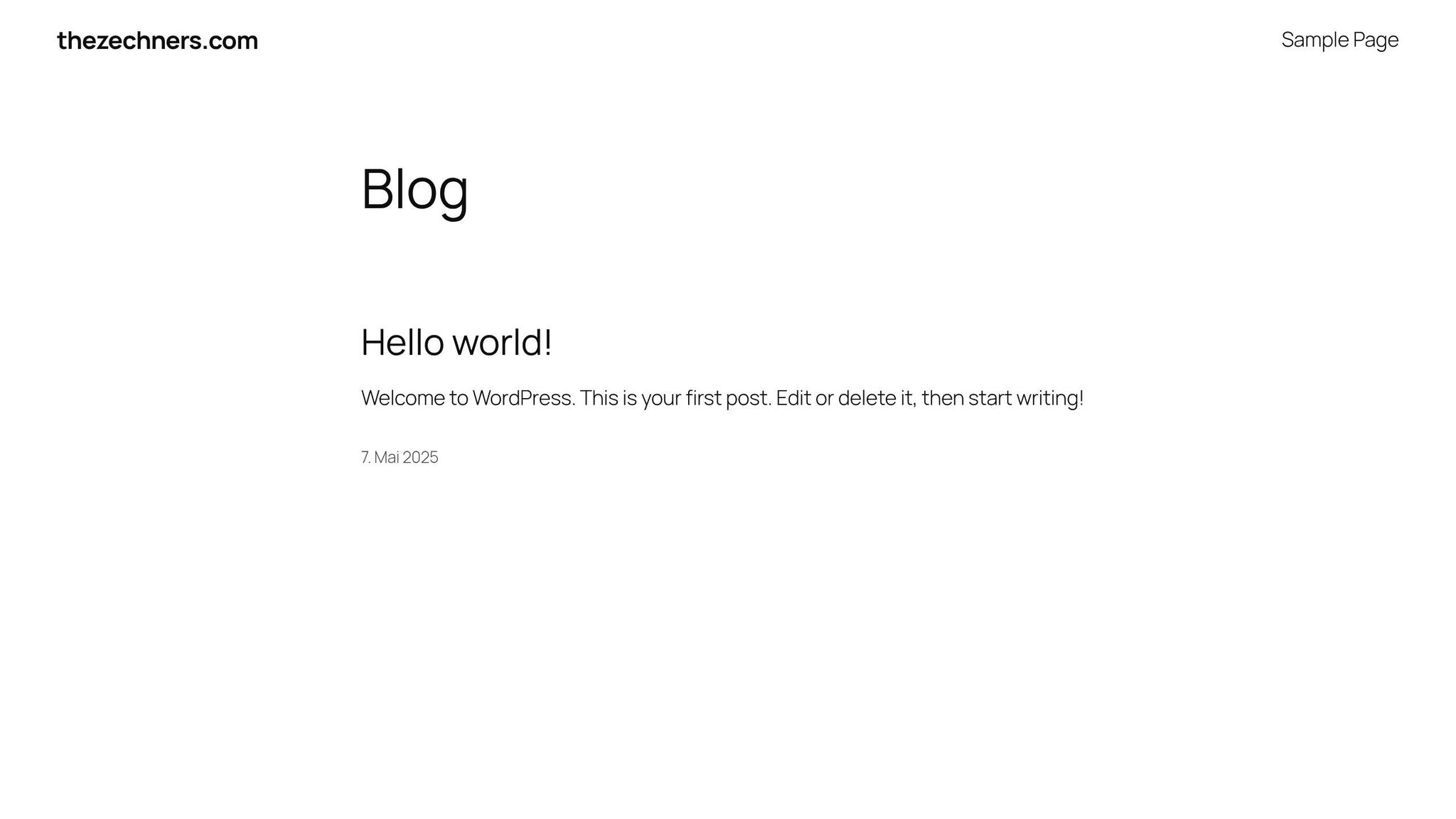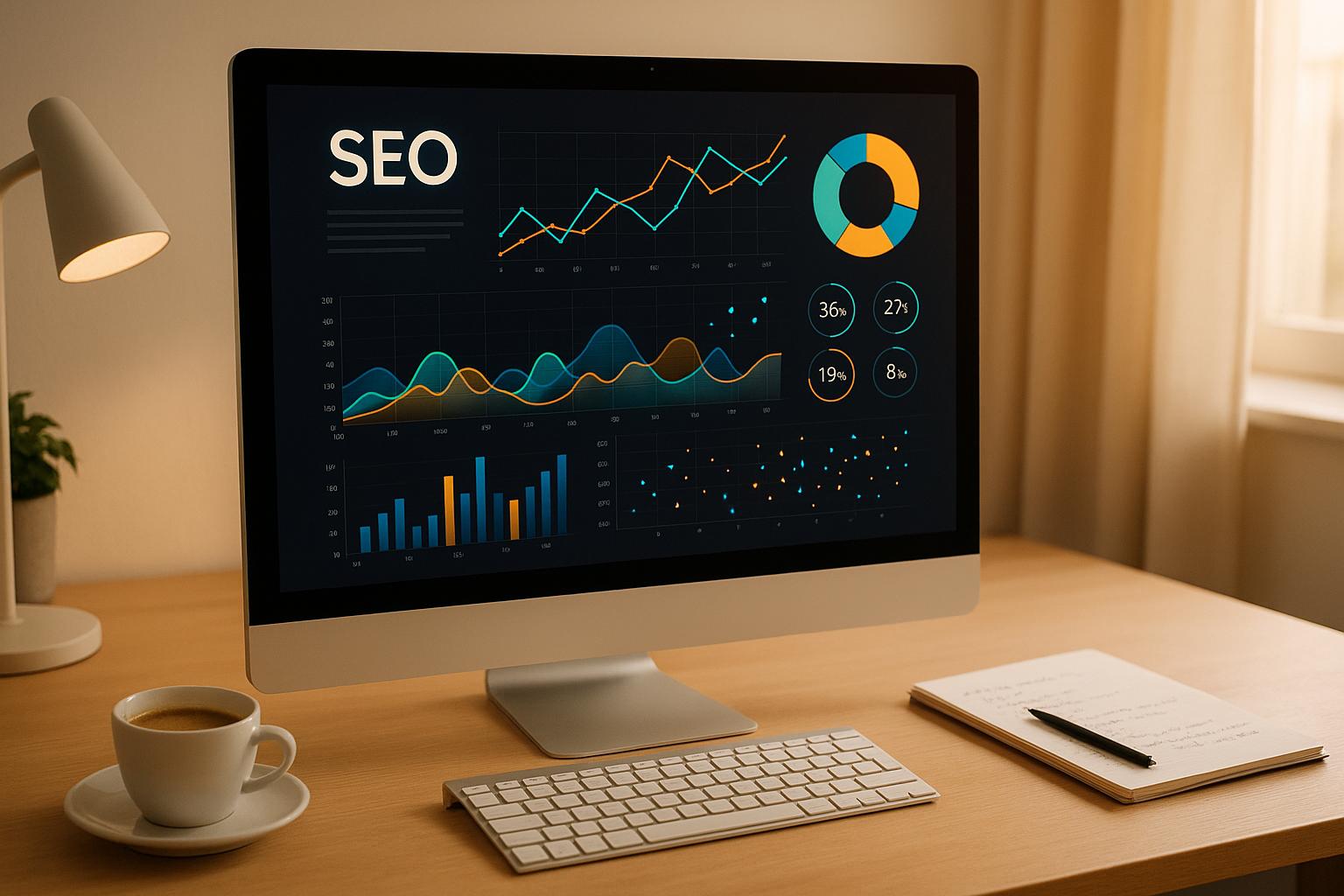SEO today is all about data. Here’s why it matters:
- Data drives decisions: From keyword research to content strategy, data helps businesses understand user behavior and improve search visibility.
- Focus on user intent: 80% of searches are informational. Understanding intent is crucial for creating content that resonates.
- Technical optimization: Metrics like Core Web Vitals (e.g., page load time ≤ 2.5s) directly impact rankings and user experience.
- Competitor insights: Analyzing backlinks, content gaps, and domain authority reveals opportunities to outperform competitors.
- Predictive analytics: Anticipating trends helps businesses stay ahead, such as preparing seasonal content months in advance.
Key takeaway: Data is the backbone of modern SEO, replacing guesswork with measurable, actionable strategies.
The Power of Data-Driven SEO with Andreas Voniatis, an SEO Veteran with 20+ Years of Experience
Key Data Elements in SEO Strategy
Modern SEO relies heavily on data to create strategies that deliver results.
Finding and Mapping Target Keywords
Effective keyword research now focuses on user intent rather than just search volume – data shows that 80% of queries are informational.
"The biggest mistake I see people making with keyword research is simply not doing it… Now that Google has evolved and is providing search results based on the intent of the search query, keyword research is more important than ever." – Greg Gifford, VP of Search, Search Lab
Tools like the Propensity Engine can help uncover keyword opportunities by analyzing intent and aligning it with content goals:
| Intent Type | Search Volume % | Focus Area |
|---|---|---|
| Informational | 80% | Educational content |
| Navigational | 10% | Brand or location pages |
| Transactional | 10% | Product or service pages |
Data-Based Competitor Research
Analyzing competitors’ performance provides insights into areas for improvement. Key data points to evaluate include:
- Domain authority and site age
- Backlink profiles
- Content gaps and topic coverage
- Technical structure
- User engagement metrics
This type of research helps identify what competitors are doing well and where there are opportunities to stand out.
Technical Site Analysis and Speed
Technical optimization plays a crucial role in SEO, with 64% of marketers actively investing in it. A great example is a 2022 project by CNN Brasil, which improved Core Web Vitals and page speed, resulting in a 91% increase in pageviews and a 19% boost in top 10 rankings.
Here are the Core Web Vitals benchmarks for strong performance:
| Metric | Target | Impact |
|---|---|---|
| Largest Contentful Paint | ≤ 2.5s | Improves load perception |
| First Input Delay | ≤ 100ms | Enhances interactivity |
| Cumulative Layout Shift | ≤ 0.1 | Ensures visual stability |
With mobile devices accounting for 60.08% of web visits as of January 2024, optimizing for mobile performance is critical. These technical improvements not only enhance user experience but also feed into broader SEO metrics, linking technical changes to measurable results.
SEO Analytics and Measurement
After implementing technical and strategic SEO improvements, it’s essential to measure performance using accurate analytics.
Main SEO Success Metrics
To understand the impact of your SEO efforts, focus on key performance indicators (KPIs). These metrics fall into three main categories:
| Category | Key Metrics | Purpose |
|---|---|---|
| Visibility | Organic visibility, Rankings | Monitor search presence |
| Engagement | CTR, Bounce rate, Time on page | Evaluate user interaction |
| Value | Conversions, ROI, Non-branded traffic | Measure business outcomes |
It’s important to align these metrics with your business objectives. For example, tracking conversion rates from organic search often provides more meaningful insights than simply measuring traffic volume.
"SEO KPIs (key performance indicators) are metrics to measure how well your SEO efforts perform. Common SEO KPIs include organic visibility, keyword rankings, organic click-through rate (CTR), and conversions." – Carlos Silva, Author
Combining Analytics with Propensity Engine

The Propensity Engine takes traditional analytics a step further by connecting user behavior patterns with SEO performance data. This integration reveals which content drives the most impactful user actions. Here’s how it helps:
- Improved Attribution: Understand how visitors from organic search progress through your conversion funnel.
- Content Insights: Identify pages that generate the highest engagement and conversions.
- User Journey Mapping: Analyze the path users take from search to conversion.
For a more complete view of search performance, integrate Google Search Console with Google Analytics 4.
Making Data Clear for Teams
Clear and actionable SEO insights help teams make informed decisions. Use these best practices for effective SEO reporting:
Contextualizing Performance
- Compare metrics across different timeframes.
- Factor in external influences like algorithm updates.
- Tie performance changes to specific SEO actions.
Visual Storytelling
- Transform raw data into visual formats that highlight trends and patterns.
Actionable Insights
- Focus on trends and their underlying causes.
- Provide prioritized recommendations.
- Show how SEO efforts directly impact business goals.
sbb-itb-3726a71
Predictive SEO Analytics
Predictive analytics takes SEO to the next level by moving beyond traditional and real-time metrics. Instead of reacting to trends, it helps businesses anticipate them, giving them a head start in adapting to market shifts and user behavior.
Seasonal Traffic Patterns
Knowing when seasonal trends occur helps businesses plan their content and campaigns effectively. By analyzing past data, companies can forecast future search habits and prepare accordingly.
| Season | Planning Timeline | Focus Areas |
|---|---|---|
| Holiday (Nov-Dec) | 3–4 months ahead | Gift guides, sales content |
| Summer (Jun-Aug) | 2–3 months ahead | Travel, outdoor activities |
| Back-to-School (Aug-Sep) | 2 months ahead | Educational resources |
| Tax Season (Jan-Apr) | 1–2 months ahead | Financial advice |
For instance, search interest in "country wedding venues" peaks from late December to mid-January. Smart publishers prepare content 6–8 weeks in advance to establish authority in search results. These insights naturally tie into tracking SERP dynamics for ongoing adjustments.
SERP Changes and Updates
Staying on top of SERP (Search Engine Results Page) changes and algorithm updates is a must for modern SEO. Tools like the Propensity Engine can identify new SERP features and spot content gaps.
Key areas to monitor include:
- Featured snippets: Opportunities to claim top visibility.
- People Also Ask (PAA): Growth in related queries.
- Local pack presence: Important for location-based searches.
- Mobile SERP variations: Differences in how results appear on mobile devices.
Custom alerts in Google Analytics 4 can flag sudden traffic shifts, often a sign of algorithm changes. This allows businesses to respond quickly and maintain visibility. By keeping an eye on SERP trends, companies can better understand user behavior and refine their strategies.
User Behavior Analysis
Predictive SEO platforms analyze how users interact with content, helping businesses optimize for better engagement and performance. Companies using these strategies have reported impressive results, such as a 73% average increase in organic traffic and a 42% revenue boost within a year. Additionally, by 2023, businesses leveraging predictive analytics are expected to achieve 20% higher profitability compared to their competitors.
Important metrics include:
- Content engagement duration: How long users stay on a page.
- Navigation patterns: How users move through a site.
- Conversion paths: Steps users take before completing a goal.
- Search intent signals: Clues about what users are really looking for.
This data helps businesses create content that not only ranks but also resonates with their audience.
Conclusion: Data-Driven SEO Results
Key Takeaways for SEO Teams
Data-driven SEO has become the backbone of search optimization, shifting from guesswork to evidence-based strategies. Organic search now accounts for 40% of business revenue, with nearly half of marketers (49%) identifying it as the top-performing channel for returns.
Here’s a quick breakdown of the areas that matter most:
| Focus Area | Impact | Key Metrics |
|---|---|---|
| Mobile Optimization | Drives 63% of US organic search traffic | Core Web Vitals, mobile usability scores |
| Content Strategy | Increases traffic by up to 28% | Engagement rate, conversion paths |
| Technical SEO | Boosts SERP visibility | Page speed, crawlability |
| User Behavior | Improves conversion rates | Time on page, navigation patterns |
Moving Forward with SEO Data
Platforms like the Propensity Engine offer deeper insights into user behavior and search trends, giving you the tools to refine your strategy further. To keep improving your search visibility and conversions, focus on these next steps:
- Set SMART goals that align directly with your business objectives.
- Use PageSpeed Insights to monitor Core Web Vitals and ensure top performance.
- Analyze user behavior with detailed analytics to uncover actionable patterns.
FAQs
How can businesses use data to better understand user intent and improve their SEO strategies?
To better understand user intent and enhance SEO strategies, businesses should analyze search queries, leverage analytics tools, and study user behavior patterns. By examining the specific terms people search for, you can uncover the intent behind their queries – whether they’re looking for information, comparing options, or ready to make a purchase.
Tools like Google Analytics and Google Search Console provide valuable insights into user behavior, search trends, and keyword performance. By combining this data with metrics like click-through rates, bounce rates, and dwell time, businesses can identify what resonates with their audience and refine their content to meet user expectations.
Ultimately, using data to align your SEO strategy with user intent helps create more targeted, relevant content, which can improve search rankings and drive better results.
What key technical SEO metrics should I focus on to boost search rankings, and why are they important?
To improve your search rankings, focus on key technical SEO metrics such as organic traffic, keyword rankings, search visibility, referring domains, indexed pages, index coverage errors, Core Web Vitals, and your website health score. These metrics provide valuable insights into how well your SEO strategies are performing and help identify areas for improvement.
For example, Core Web Vitals measure critical aspects of user experience like page load speed and interactivity, which influence how search engines rank your site. Similarly, tracking indexed pages and resolving index coverage errors ensures your content is discoverable and accessible in search results. By regularly monitoring these metrics, you can fine-tune your strategy to achieve better visibility and ROI.
How can businesses use predictive analytics in SEO to stay ahead of trends and create timely content?
Predictive analytics in SEO helps businesses anticipate future search trends by analyzing historical data, current patterns, and emerging behaviors. This allows marketers to identify keywords and topics likely to gain popularity, enabling them to create and optimize content in advance.
By leveraging predictive models, businesses can stay proactive, ensuring their content aligns with upcoming search demands. This not only improves search rankings but also positions businesses as leaders in their industry by addressing audience needs before competitors do.
